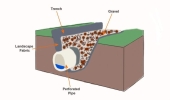




If there is one thing the Wizard of Oz has taught me, it is not to trust school teachers on bicycles.
 2
2




“The most important decision we make is whether we believe we live in a friendly or hostile universe.”― Albert Einstein
 3
3








If there is one thing the Wizard of Oz has taught me, it is not to trust school teachers on bicycles.




If there is one thing the Wizard of Oz has taught me, it is not to trust school teachers on bicycles.
 2
2




Nails are sold by the pound, that makes sense.
Soluna Garden Farm -- Flower CSA -- plants, and cut flowers at our farm.
 2
2




“The most important decision we make is whether we believe we live in a friendly or hostile universe.”― Albert Einstein
 1
1




If there is one thing the Wizard of Oz has taught me, it is not to trust school teachers on bicycles.
 1
1




“The most important decision we make is whether we believe we live in a friendly or hostile universe.”― Albert Einstein
 2
2




If there is one thing the Wizard of Oz has taught me, it is not to trust school teachers on bicycles.

|
Can't .... do .... plaid .... So I did this tiny ad instead:
Freaky Cheap Heat - 2 hour movie - HD streaming
https://permies.com/wiki/238453/Freaky-Cheap-Heat-hour-movie
|




